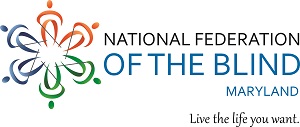Subject: Textbook Equity for Blind Students Act
From: Members of the National Federation of the Blind of Maryland
To: Members of the Maryland General Assembly
Contact: Ronza Othman, President
National Federation of the Blind of Maryland
15 Charles Plaza, #3002
Baltimore, MD 21201
Phone: 443-426-4110
Email: President@nfbmd.org
Date: January 18, 2024
THE PROBLEM
Blind students do not have an equitable education because they do not get their textbooks and supplementary instructional materials in a timely manner. Sometimes, they do not get them at all.
PROPOSED ACTION
The Maryland General Assembly should pass The Textbook Equity for Blind Students Act. This bill will require: 1) county boards of education to make their decisions about which textbooks to use for the coming school year by January 15; 2) the Maryland State Department of Education to purchase the book if the Maryland Instructional Resource Center (MIRC) does not have it or cannot locate it; and 3) publishers of pupil edition textbooks to send an electronic file in the National Instructional Material Access Standards Format (NIMAS) for any book purchased in Maryland.
BACKGROUND
In 1992, the Braille Literacy Rights and Education Act was enacted into law. This bill required the Maryland State Department of Education (MSDE) to coordinate the availability of textbooks in accessible media, including Braille and large print, for blind students. The result was the establishment of the Maryland Instructional Resource Center. All the local education agencies agreed to store their books at the MIRC and to allow the MIRC to give the books to other counties if they were needed. In 2006, legislation was enacted to help with the acquisition of textbooks that were not produced in accessible media. Problems remain because counties do not make their decisions about which textbooks to use in the coming year early enough to have the book transcribed into accessible media.
Currently, if the MIRC does not possess a given textbook, it will tell the county boards the cost to produce it in the needed format. Many counties either cannot afford or will not pay to have the textbook produced in the needed alternate format, so the blind student is left without a textbook. The 2006 legislation said that MSDE should collaborate and support the MIRC, but action must be taken to solve the problem of acquiring textbooks. If blind students are to have an equitable education, the MSDE should fund the production of books.
The 2006 law also called on publishers to give an electronic file in the NIMAS format if they were asked to do so. This language doesn’t work because the burden is on counties to ask publishers for the book, and they do not do so. Therefore, the 2006 law needs to be updated and strengthened to meet these needs and to take advantage of advances in technology.
BENEFITS OF THE PROPOSED LEGISLATION
The legislation assigns specific functions to MSDE and the publishers. MSDE has been supporting the MIRC since its inception, but additional support is needed when counties do not pay for the cost of production of textbooks and instructional materials. The goal of MSDE is to provide equity throughout Maryland. Blind students should not be denied access to instructional materials because of where they live.
The proposed bill will require that publishers send an electronic file in the NIMAS format of every pupil edition textbook sold in Maryland to the National Instructional Materials Access Center, beginning in 2025. The National Instructional Materials Access Center will store these files for use in production of the books. This should not be a burden on publishers because of advances in technology and software applications. Many publishers are even able to provide math and science books for translation and production. While the translation of math and science books into Braille certainly is not perfect, it has improved since 2006.
The legislation will provide greater accountability to the entire process of acquiring access to books and other instructional materials. The MIRC will be required to report yearly to MSDE on the accessibility and delivery of textbooks and supplementary instructional materials including the number of requests that cannot be filled and why, and on the number of electronic files delivered to the National Instructional Material Access Center by publishers. MSDE will be required to put the data provided by the MIRC on its website for public review. The department will also be required to provide a report yearly to the Governor and General Assembly concerning whether blind students are gaining equitable access to instructional materials.
CONCLUSION
The problem of providing blind students with access to the curriculum is yet to be solved because of issues with access to textbooks and supplementary instructional materials. County Boards of Education must be required to make their decision about which textbooks and supplementary instructional materials will be used in the coming school year early enough so that there is time to produce these materials. The general assembly and MSDE have attempted to provide access, but those attempts are not enough. It is time to update the 2006 law. This legislation will assign specific responsibilities to the local education agencies and to MSDE. Publishers must play a role in providing an electronic file in the NIMAS format to the National Instructional Materials Access Center because of the time and money that will be saved by having the file. Enforcement of the law is most important. The accountability measures in the bill will make enforcement possible. Blind students are entitled to receive their textbooks and supplementary instructional material at the same time as their sighted peers. They should not be penalized because of the area of the state they live in. It is time to provide blind students with an equitable education.
